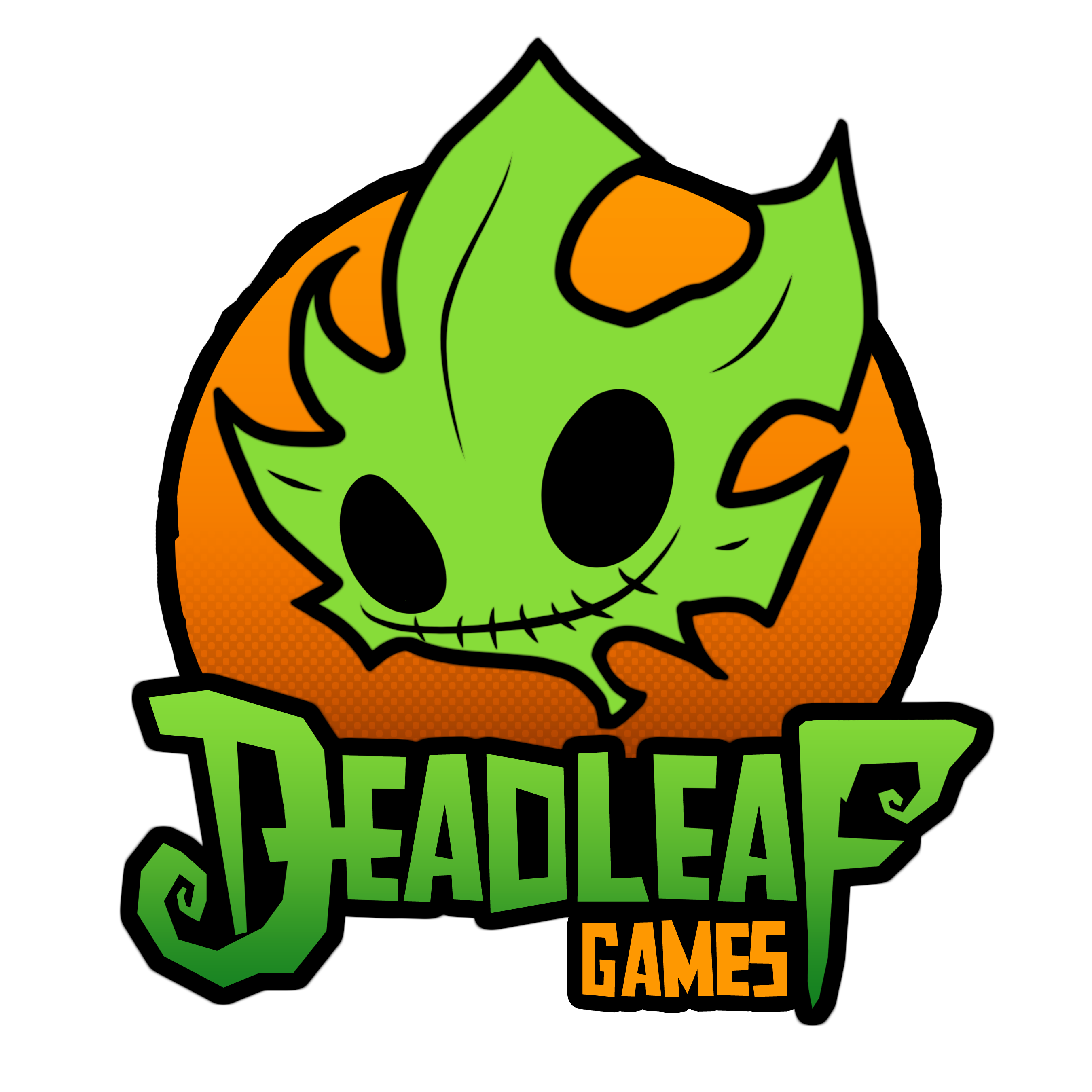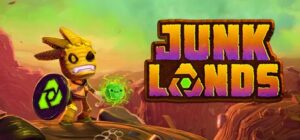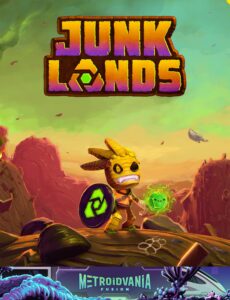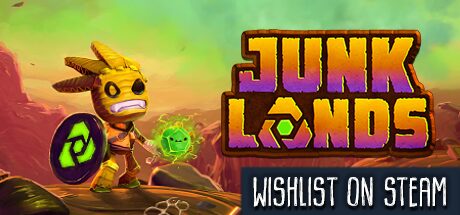Posted on September 6, 2024
A Small Guide For Gamescom
![]()
Howdy, Josh here. So I just finished my first Gamescom. It was three days filled with demos, networking, meeting new people, meetings, and discoveries. I went with the 3 day Trade Fair pass with the intention of pitching, networking and meetings. I had many questions leading up to the event, some answers I found online and some I had to ask, but there’s a few things I found out along the journey as well. Keep in mind, as everyone’s journey is different, this can be subjective but hopefully it helps in someway!
I started these Dev Campfire posts as a way to document and share what I’ve learned along the way. You can read my previous post here: Dev Campfire: Localization and Text
Goals for Gamescom
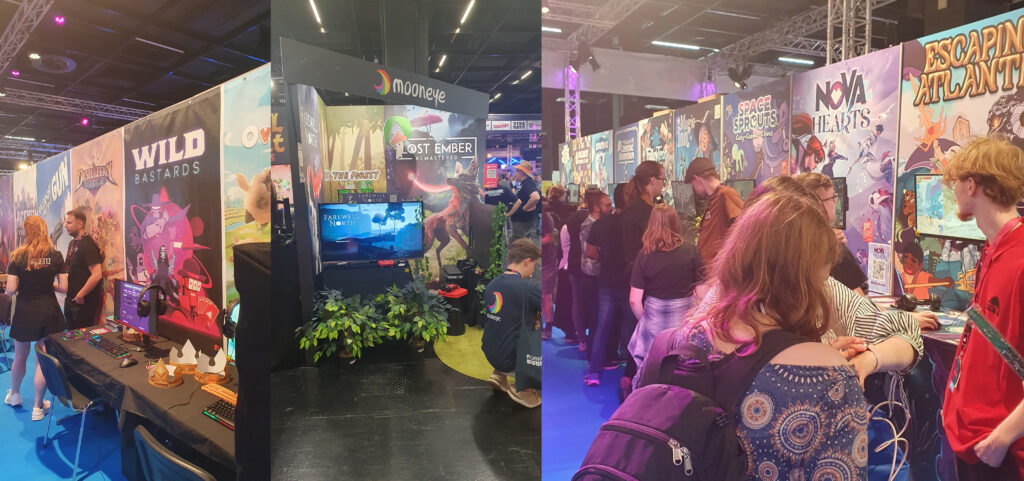
What are your goals for Gamescom? This will affect what you’ll need to do and prep for.
Exhibiting
Are you exhibiting? Great! These are the questions you’ll need to ask yourself:
- How will you acquire a booth?
- Is there any local government assistance, grants or programs you can utilize?
- Do you need to promo materials (cards, fliers, etc)?
- What press will you reach out too?
- Will you need help with the booth?
There’s two places the games are exhibited, in the Business Area and The Public Indie Area. The Game booths exhibiting in the business areas are supported by their local government but not accessible for the public to play. This is totally valid as you may be just after Press, Publishers, or other developers to showcase too. If you plan to showcase in the Indie section you’ll most likely to apply to Indie Arena Booth for a spot to exhibit.
Networking and Pitching
Are you networking and pitching? These are the questions you’ll need to ask yourself:
- How will I organize to meet with people?
- Is there any local government assistance, grants or programs you can utilize?
- what materials do you need (business cards, digital pitch decks, Press kit, etc)?
- What people will you reach out too?
So you’re going to Gamescom to Network and/or Pitch? Cool, Gamescom has a meeting app for you to connect with potential people of interest and create meetings for the event. A lot of people use MeetToMatch also, so be aware you may be bouncing between the two apps.
Meetings
![]()
Meetings
Once the Gamescom App goes live you will be able to see which people and companies are attending Gamescom and arrange meetings with them. Same goes for MeetToMatch, but it requires a fee to use. MeetToMatch does go live much earlier (around June). So if you want to be able to get in early and arrange meetings I suggest MeetToMatch as well. Keep in mind you can keep organizing meetings right up to the event and even during. I had people send requests a day or two before the event. Don’t worry if people don’t respond closer to the event date, it picks up a lot from August onwards.
Also make sure you research who you’re meeting with so you know what each other are looking for.
Organizing your time
I feel the best advice I have, is keep some slots free just in case of any last minute opportunities. You’ll have various people contact you to pitch services. This may be what you want but there’s a lot of people and your time is limited! Only meet if you absolutely want to network or meet. Don’t waste each other’s time.
You will also need to take breaks or hurry between meetings, so there’s no need to completely have everything back to back. You’ll have 30 minutes to chat and it doesn’t take much to run over time with meetings as well. All this is pretty obvious but worth pointing out.
Where to meet
Gamescom has business meeting areas on each level in the Trade Fair halls. You can either book a table at one of these spots, use your country’s booth or just a place as a designated meeting point. I was lucky enough to be able to use the meeting table supplied by the Australian booth area.
It’s worth thinking about where you’re meeting people as sitting space is limited. You can organize and change the location as it suits, but keep in mind, you’ll be traveling from meeting to meeting. If you don’t have a meeting area to sit at, it’s worth finding the nearest food area with seating or asking the table manager at the business meeting areas if there are any free tables. It just makes it easier to pitch if you have to pull out a laptop or keep someone’s attention.
The first day I had a meeting outside of Gamescom, so I left enough time for travel to and from the venue, blocking out time slots. I’m glad I did, because there was no way I was going to make it back in time and in the end allowed me to walk around and map the layout.
Networking materials
If you are pitching, you’re not going to have enough time to demo the game itself and your contact will be asking questions. Your pitch deck should ideally go for a duration of 12 minutes max and show off your unique selling points cleanly as possible. You can also try to show off a trailer but you’re generally going to be talking all the way through a noisy environment.
We had a small flyer with some kick-ass art that linked to a downloadable pitch deck to hand out as well. It was handy and accessible and people left the meeting with a physical reminder which was great.
You should have a business card, QR code or some kind of easily accessible way for people to access your project or details. You want to make it as easy as possible for them to follow up with you. The same applies for networking. I had an unplanned pitch so handing out these project flyers made it easy for them to get more info on the project.
Avoid having to download anything on the day and have it all ready to go on a device or laptop because wifi will most likely be slow or possibly absent.
Travel

Traveling to Gamescom
Just wanted to do a small section with a few travel tips. Purchasing the Trade Fair ticket granted free public transportation to and from the event. Gamescom is located at Koelnmesse (Cologne Trade Fair) and is just one stop from Cologne Central Station, which makes it super easy to jump on and get to. That being said we booked accommodation near the station. Something to remember when booking a place to stay in Cologne.
So one tip I got the drop on early is accommodation. Gamescom, being the event that it is, means a lot of tourism occurs at this exact time every year. You’ll want to book as soon as you can because the cheap and close places will go very quickly leading up to the event. June/July is probably an ideal time to start. With the event happening annually, accommodation will usually have an increased prices for this period. Good thing you can claim it, right!
August is Summer for Cologne. Which means it’s really hot. We had a room close to the station but it had no air-con. It did have a fan but it was still hot. Something to think about, make sure you stay hydrated throughout the day and event.
Devcom also takes place prior to Gamescom on the Monday and Tuesday, so you can round out the week with all the events. There’s also industry parties that happen after Gamescom, great for that extra networking.
Conclusion

My Gamescom Takeaways:
– Pitched to a Publisher I wasn’t expecting to and was able to make contact and follow up post Gamescom.
– Beneficial for indies to network.
– Met some new people I clicked with and might work with in the future.
– Discovered some new tech that will help our projects.
Gamescom was a blast to go to, it surpassed my expectations. I met amazing and passionate people, pitched to new companies, learned new solutions to processes, broadened my network and even got to pitch Junklands to my dream publisher. It’s all consuming in the best way, you will get lost but least there’s something to play on every corner.
If I’m missing something please let me know, always happy to have people add onto these. Hopefully this will help someone out there with organizing their time at Gamescom.
– Josh
Illustrations by Manfred Steger
Updated on May 18, 2024
Journey to the Junklands
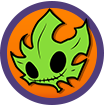
Hi, it’s been a while since our last post, though things are very alive and well! We’ve been working hard on our next big adventure which is in fact a big action adventure game – Junklands! 🙂
We’ve been making large strides and very excited what the game has become. Below is an early gameplay trailer of some of the elements we’ve been working on. We’ve got some very cool abilities such as shield surfing and lava walking, along with various ways to use the shield in puzzles.
Junklands is about the environment and our impact, so we’ve spent a decent amount of time figuring how we could intertwine our larger gameplay mechanics with the theme. The game has its progression tied to gaining abilities to traverse, explore and twist the environment. If you’re thinking – ‘ Yeah, but Josh that’s kinda what you do in most games.’ Well yeah, though we take it further where you’ll see and feel the impact of changes throughout making Junklands a tad more special with exploration and level immersion.
Also wanted to show a little more of the combat. While its still being developed we’ve received a lot of positive feedback on how it feels. Armed with a Trash-Lid shield, you will battle pollutants in a defensively offensive way. The combat has an agile boomerang feel with timing moves and counter-moves being the core strategy where being defensive is just as important as being offensive. It feels really fun to chain a series of moves together too. Being able to reflect, throw, dash and catch to then block allows you to skillfully take out enemies.

Rahr’s Combat Moves
Recycling (Obliterating) Pollutants also plays an important part in combat as well.
♻️ When a Pollutant’s health gets low, Rahr can get in close and power up the Green Orb to Obliterate them! This recycles the enemy giving Rahr some health back and also guarantees scrap to craft trinkets and upgrades.
☣️ Destroying an enemy normally – has a chance of spawning muck which causes damage if stepped on.
Each option has their risks and rewards in the heat of combat.
We’ve also got a steam page for Junklands now, so Wishlist and Follow to support us there!
Speaking of Steam, we were graciously apart of the Metroidvania Fusion Event, a curated Steam Event showcasing a variety of the coolest metroidvanias! You can check it out here: https://store.steampowered.com/curator/41046058/sale/MetroidvaniaFusion
That’s all for now! It’s great to talk about it in more depth. You can check our development posts on our socials as well. Instagram and twitter are usually the most active ones!
– Josh
Updated on July 23, 2022
A New Adventure!
Howdyyyyyy,
Hello Hello. So, It’s been sometime since the last blog post. A lot has happened both personally and externally (private matters, covid and other world events). As the dust has somewhat settled, we feel now is a good time to talk about what we’re doing next!
If you’ve seen some of our posts on our socials, we’ve been slowly putting together a new project, Junklands. An action adventure game that follows Rahr, a cardboard misfit whose search for belonging becomes hinged on a quest to heal Junklands from its polluting overlords. With a mighty shield and the Earth orb, players embark on an otherworldly journey to save the environment from the brink of collapse. Your effort and choices will effect the Junklands!
Rahr and the Junklands world was created 11 years ago as a 2D platformer but never really got far at the time. As we were developing our next adventure, we kept returning to a few very old concepts of Rahr just hanging there on the wall and knew it would be something really awesome to jump back into. So here we are, It’s been exciting to fully flesh out the theme, world and game mechanics so far!
Our game will be 3D, adventuring between different areas in control of toxic tyrants and its up to you to stop their impact on the area. We want to create a bleak world to find beauty in. You’ll dive into beautifully dark polluted environments as the spark of hope and force of change. The guardians are trapped throughout, waiting to give Rahr the tools to explore and withstand the Junklands.
Rahr’s main tool for puzzles and combat will be the shield. Think trash-lid Captain America. You can throw the shield at switches, enemies and more! Ability upgrades will allow you to do more with the shield to aide your progression.
On top of that we’re very proud to say, we’ve grown from solo developer to small team that’s striving to create something really awesome! We’ll also be starting devlogs very soon, so keep an eye out for that!
Last year, we were chosen in VicScreen’s huge funding round, and were also one of the winners of the Business Mentorship program which we used to plan our trajectory for Junklands! Our local government’s support has helped us immensely and we’re deeply grateful!
https://www.gameshub.com/news/news/film-victoria-funds-16-games-as-part-of-4-3-million-investment-3787/
https://igea.net/2021/07/the-winners-of-11-business-mentorship-with-jason-della-rocca/
Junklands is a work in progress, so we’d love for you to join us!
We really want this to be an awesome game! So jump onto our socials and follow our journey of creating Junklands!
– Josh
Updated on February 21, 2020
Nom Nom Apocalypse is out!
![]()
Hi all,
Nom Nom Apocalypse is out now on Steam! Excited to have released my first game! It’s been a lot of hard work and have learned a lot as a solo developer. I’m glad it’s out there and people are having fun!
Here’s what some people have been saying:
“With its relentless pace, endearing and colourful graphics, and simple but challenging gameplay, Nom Nom Apocalypse is reminiscent of old-school arcade games. It immediately hooks you in by giving you just enough of a challenge to sink your teeth into without it feeling tedious or frustrating.” – Checkpoint Gaming
“This food-based twin-stick shooter has plenty of excitement and challenge, as well as some unusual enemies and weapons.” – Nindie Spotlight
“There is a lot of replayability, and the different abilities from the different characters are really nice for keeping you coming back for another serving.” – Chalgyr
“Nom Nom Apocalypse is a fast paced and personality filled twin stick shooter.” – Handsome Phantom
“Nom Nom Apocalypse makes the end of the world look delicious. The presentation is great and the gameplay is tight and smooth. The delectable food trying to eat you doesn’t stand a chance against all the creative perk combinations and weaponized kitchen items.” – Save or Quit
Play it here on Steam!
Just wanted to thank these people who helped push this to release:
Jacob Leaney for music, Travers Dunkinson and Matt Schenkel for Trailers, Ryan Hoath for playtesting, Stride PR and FilmVictoria!
Also thanks to everyone for the support I truly appreciate it!
There’s still plenty to go as I’m still giving Nom Nom Apocalypse love and working towards console release!
-Josh
Updated on August 30, 2024
Dev Campfire: Localization and Text
![]() The localization process was something I was semi-familiar with but had never executed on my own projects until now, and thought sharing my experiences might be a good one to cover. There’s a fair amount of decent information out there on how to setup localization but there were a few things I had to reach out for help on and find out myself, hopefully this post will help! These Dev Campfire posts are based on my experience and research, my goal is approaching development with lean and agile production. You can read my previous post here: Dev Campfire: Cheat Tools In Development
The localization process was something I was semi-familiar with but had never executed on my own projects until now, and thought sharing my experiences might be a good one to cover. There’s a fair amount of decent information out there on how to setup localization but there were a few things I had to reach out for help on and find out myself, hopefully this post will help! These Dev Campfire posts are based on my experience and research, my goal is approaching development with lean and agile production. You can read my previous post here: Dev Campfire: Cheat Tools In Development
Research
![]()
Generally any system is going to take way more time and headaches to make yourself then simply purchasing a well-functioning preexisting one. Usually the cost of a plugin will always be cheaper in the long run (As long as it does what you need it to do).
I2 Localization for Unity was a smooth process to setup. For the majority of text, I could add to the I2 component and let it do its magic. Great bonus feature with this tool is that it can change the font based on its language, so you can have a suitable font for each language. It also has a lot of other great features and is worth checking out.
I’ll do a quick run down of the most common tips for localization:
- Figure out your demographic and target audience to translate to before hand
- Try to setup your localization early on
- Don’t hard code text
- Avoid text in visuals or textures if possible
- Make sure your fonts support unicode characters. (You can get royalty free fonts from Google Fonts.)
- Make sure you have enough room for text in menus and especially on buttons. Languages like German can have long character lengths.
- Be descriptive when leaving comments for your translators
- Make sure your game is appropriate for the languages and cultures you’re targeting.
You can see some more great tips in detail from these links:
https://www.gamasutra.com/view/feature/175367/10_tips_localization.php?page=1
http://1uptranslations.com/en/localization-blog/2018/how-to-prepare-your-game-for-localization
Design In Style
![]()
Designing your interface
If you’re planning to translate text in your game you definitely need to take the time to think about how it will be presented beforehand. The more text you have, the more it will cost. Think about setting guidelines for using text and using text only when necessary. This of course depends on the game, but in most cases try and keep your descriptions to the point, informative and clear. Not only to save cost on translations but not to leave the player reading walls of text. Think about how you would feel as a player in an action game having to stop and read a wall of information at certain intervals. Design the information to work with the flow of the game.
Reusing phrases
Think about how you can reuse phrases in multiple locations of your game. Instead of having different ways to say ‘Okay/confirm’ reduce it down to one or two terms, not only does this reduce the cost of your localization but it builds a strong consistency through interface navigation.
Consistency is key
Keep text style consistent through the game. If you use certain fonts for buttons, headings and descriptions make sure it follows through everywhere in the game. This makes it easier for the player to learn the structure of your menus and makes processing information much faster. Its not going to be possible all the time but it helps the player understand your navigation. I tried to make sure that my ‘back/close’ button was always in the top right hand corner in all of my menus. I wanted to make sure my players didn’t have to guess how to navigate each menu.
Distance from the screen
Size of your text is important. Generally you’re close to the screen on your computer but if the game is played on a different platform, you want to make sure the text is easily legible from a distance. With different languages having different character lengths you want to try to make sure all languages can be legible. Players will be seated at least 2+ meters from a screen on consoles and mobile devices will have a smaller screen with small viewing distance.
Visual presentation
Lastly think about the visual presentation about your text. Make sure it’s neat, easy to read and the colors used aren’t jarring or fighting with other visual elements. Ideally you want the player to spend a short amount of time reading text otherwise they’re most likely going to ignore it or give up reading it. While this is circumstantial to the game, you want the player to be able to process any information as quick as possible. I strongly feel that you shouldn’t be overly artistic with your text as its main purpose is to be informative, but it all depends on the content and tone.
- Use guidelines when implementing text
- Keep in-game descriptions on point, informative and clear
- Design information to work with the flow of the game
- Reuse phrases where possible
- Keep fonts consistent through buttons, headings and descriptions
- Consistency helps players navigate and process information on the screen faster
- Think about the legibility and size of your text based on your platforms
- Keep presentation for text neat and visually easy to read
Preparing Your Game for Translation
![]()
First things first! Make sure the way you’re going to upload your translated strings into your game will be a smooth process. Ideally find out what file format your translators will provide translations and if you can export them as a file your localization system can read. If they can only work in an excel spreadsheet make sure you can import and export without losing information or having to adjust anything. Ideally you want to just to be able to import/re-import the localization file and know its going to reconnect all the strings to your text with minimal rework (or none at all).
You want to make sure all of your text/strings have an obvious id. Example:
StartText – Start
QuitText – Quit
CharacterAText – Character A
It will be easier to track and navigate especially dealing with other languages.
Storing Strings
Develop a smart way to load in your strings. If you have a list of items or abilities with descriptions you’ll probably be loading them all in at some point. Avoid having to read from file every time you select a list item. You could preload your list descriptions by grabbing them in the chosen language, storing them in an array, then pulling your specific strings from there. You’ll save on the amount of bottlenecks and checks every time the player selects item or description. There are many ways to go about this, ultimately the way to design your system will depend on your personal preferences and the game itself.
Numbers
I was surprised to find out that my numeric values remained in English when I had everything translated. The result was beneficial because I didn’t have to worry about ranking numbers in leader boards, scoring systems or or an item with a stat value. This means you could probably change or tweak these values and not worry about getting it translated again. You could go that extra step and make sure numbers are shown in their native language but I’m guessing this also means extra work creating unique systems that know how to piece together numbers in other languages.
eg:
10 = 十 20 = 二十 100 = 一百 200 = 二百 1000 = 一千
Languages like Simplified Chinese have special characters to represent different quantities like 100, 1000, etc. So converting numbers over to something like a score isn’t so simple. Definitely something to think about.
I couldn’t really find a simple and quick solution to converting score to different native characters, so if you do know please feel free to share.
Structuring Sentences
One mistake I made was structuring a sentence that contained a variable. So when I had a question to ask in game, which constructed a string containing a variable, this had to be rethought. Luckily this was the only case and a simple fix.
My question:
'Are you sure you want to delete Slot A?'
Slot A was the variable that would be interchanged, this does not work in other languages because you would have to write separate systems to figure out where it would be placed in the sentence in each language or translate out each varied sentence.
To fix this I separated the strings and reworded the question:
Slot A 'Are you sure you want to delete this slot?'
This is a pretty quick fix and painless setup, I could only imagine that displaying text with interchanging variables throughout would require additional systems for each language based on the sentence structure. It’s definitely something to think about when you’re setting up text in your game.
Buttons with text
If you have buttons with text, you most definitely will need to make these buttons have enough room to fit varied character limits. I suggest doing some tests in German and a few other languages to see how much space your buttons will need. Unity does have a best fit option on its text component, which allows to rescale text based on dimensions, so you can also utilize something like that as a safety net.
Finalizing Text & Strings
Don’t start translation until you’re completely ready and all your text is locked in, ideally when the game is in beta. Have the majority of text/strings hooked up and ready to go.
- Test your systems and setup with importing test localization file(s) before sending it off for translation
- Make sure all your text is finalized and locked in before translating
- Think about how to efficiently load text in chosen language.
- Think about how number values will work in your game through translation
- Sentences are structured differently in each language, avoid trying to construct strings from layered segments
- Buttons with text need to be designed with enough space in mind
Translating
![]()
A very important thing I would like to point out is that you should start a dialogue with your translators, give them a lot of information on the context, tone and of course be as friendly as possible, you want them to be asking questions and making the best choices for translations, especially when it comes to the text that isn’t common or for functionality. They’re using their judgement on what will work best for your game.
Descriptions
Descriptions are one of the most important things when translating, even the most obvious terms can have several or different meanings. Use descriptions on every single string even if its obvious because translators need to know in what context it’s used. This is especially important for functionality. Making translators aware that certain text is used for buttons or titles and headings will give them a heads up that they need to use shorter words.
Made up Names
You’re probably going to have made up names/words in your game. In the likely chance these words can’t be directly translated, you have a two options you could possibly take: A) Don’t translate it. or B) Make an alternative name for translating.
For Example: One of my bosses in Nom Nom Apocalypse goes by ‘Baconzilla’ A combination of Bacon and the last part of Godzilla. Some translators were able to translate it to a very similar name but I still supplied a second term for translators just in case, which was Bacon Godzilla. Not as flashy but they have the information to either use that straight outright or try to create something close. Providing an alternative will ensure you get the closest outcome with no surprises.
Cultural Slang, Phrases and Idioms
If I could go back and change one thing about the way I approached my localization, it would be dealing with cultural phrasing better. A lot of my ability names involved word play and while many of them would translate perfectly fine, I did have translators asking what a few meant and it made me wonder whether the some of these would make sense. My advice would be to be mindful of word play and sayings, and have an alternative phrase that you could have translated just in case. Descriptions are especially important for sayings.
- Supply tone, context, Screenshots, website and explain theme in full details to translators
- Have descriptions for every string. Use it to specify context, functionality and more information
- Have a secondary/alternative words for made up names just in case they can’t be translated accurately or to improve description
- Keep in mind the cultural phrases/sayings and word-play are not universal and might require an alternative phrase.
- Be aware of multi-cultural wording, iconography, values, customs and norms
Language Options in Game
![]()
Once your translations are done and are fed through in game, you’ll have to do a little testing and setup the languages to be accessible to the player. I would suggest making a cheat tool/button so that you can quickly toggle your languages on the fly in-game. This will save a lot of time checking whether you forgot to hook up text or if anything is hard coded. My previous post talks about the usefulness and time-saving benefits of having cheat tools here: Dev Campfire: Cheat Tools In Development
Setting up language selection should be pretty straight forward in the settings. I had the language flags next to the option so regardless of the current language the game is in, the choices can still be understood.
If you’re running your game through a marketplace/app and they have language integration, load the language the player is using on the game’s first launch and save that language setting. Alternatively you could make it a one time configuration option screen on the game’s first start up. If the player changes the language, you should save the settings to be loaded on start next time the game is running.
- Create an agile way to check text has translations setup in every area of your game
- Flag imagery can be a helpful bonus to identify language
- See if you can setup to detect the player’s language through application first time the player loads the game
Conclusion
![]()
Localization can be a costly process, so planning thoroughly and designing ahead can build strong foundations for a smooth integration of your language system. For my game, the text wasn’t heavy and was generally informative rather than narrative based but I still made sure my presentation was clear, concise and easy to navigate. It took a short amount of time and resulted in a very painless process with minimal tweaking. I’m sure there’s still some great information out there, if anyone has any other great tips or suggestions I’d love to hear them.
– Josh
Illustrations by Manfred Steger
Updated on August 30, 2024
Dev Campfire: Cheat Tools In Development
![]()
As we’re reaching the end of the project, I want to share some posts on a few things that I’ve learned, not only on this project but on my journey overall and hopefully help some other Devs out there. These posts will come under ‘Dev Campfire’. The first post I’m going to jump into is cheat tools in development.
My Journey So Far
![]()
In the last seven years working commercially, I’ve seen various ways cheat tools have been implemented and utilized as part of a project. I’ve also had over a decade and a half of making my own games and learning the hard way of not being efficient with my time and development. I’ve definitely learned a lot from my peers and the places I’ve been so fortunate to work at. There’s projects I’ve been apart of where the tools have made creating content productive, but there were some projects where there were those who didn’t see the importance of cheat tools from the start and this ended up making development and testing way longer than it needed to be.
Organizing Creativity
![]()
Cheat tools make testing content easier. It cuts down time spent ensuring scenarios and mechanics work the way they’ve been designed. From experience, I strongly feel that cheat tools should be created as soon as your mechanics are flowing and your game structure is running. A few counter arguments I’ve heard to this, is that isn’t essential to early development, a waste of time and they’re just ‘quality of life’ tools but when you’re by yourself or have a team having to go through all the motions to polish, tweak and develop functionality, gameplay and art, why wouldn’t you want to save as much time as you can?!
- Saves hours of development time
- Reduces the amount of repetition required to perform a task
- Helps all team members test and refine their specific tasks with more ease
- Helps with testing
- Improves overall workflow
- Cheat tools help everyone in team including bug-testers and trailer makers
Planning for Production
![]()
I’m lucky to have used some great cheat tool systems first hand while working at a few companies. When you have tight deadlines and you have a large team of people, you can’t afford to have them sitting there for hours playing the game to get to the function, mechanic or asset they want to test. These were fairly big games to create and over the years these tools improved workflow for them.
![]()
Though the same applies to a small game/ demo/ vertical slice. Even something that takes 10 minutes to play through can end up taking hours to iterate on when you have to go through everything without a means of a shortcut.
I was contracting on one project that had a series of steps that required a user using VR to go through. I was responsible for creating these steps along with animations, my suggestion for cheat tools was dismissed as ‘non-essential’ due to the time we had. In the end there were over 90 steps that could only be tested in VR, which meant I spent hours waiting for builds and cumbersome amount of time repeating steps to get to the area I needed to check that would of only taken a few minutes. The project took three times as long as it was budgeted for. I would say the lesson here is take the time to plan how people will be interacting with the project through development because it ended up being a long painful process with big hurdles at every turn.
- Build times draw out testing, so you want to be able to jump in as quick as possible
- Observe the project and tools you’re using and think about how will it impact the team further into production
- Plan and communicate with team
- Too much down time eats into budget
Automating Development
![]()
Teams usually spend half their time implementing what they create. Automating implementation is another area where cheat tools can help. These cheat tools help with reducing time spent on repetitive tasks and reduce possible human error through workflow of creating content.
A particular project I worked on in a very small team, had a procedural level system where I was creating the art and collision for. The modular components all had requirements and rules that needed to work in order for them to function in the game properly. Once we had a few pieces in place, the lead programmer spent a day creating an automation tool for me to get these modular pieces functional in game. It could of been a tedious task of hooking all compartments up which could of ended up in mistakes and leaving one of us to deal with all the problems in between but it instead allowed a few things to happen:
1. I spent more time creating assets which improved my production time, leading to significant amount of asset creation
2. Neither of us had to actually spent a lot of time hooking anything up
3. Any problems or changes were made globally from their end which then carried through all the assets saving an enormous amount of time
4. The time it took to get assets functional in game was almost instant.
This project came together very quick with new levels created in a small period of time, we also had a lot more fun creating it because we got to spend more time on the things we enjoyed doing.
- Automating the process where you can to implement assets will increase time for other areas of development
- Creating tools for team members will improve their workflow and also yours indirectly in the long term
- Automating some processes will allow for rapid fixing and iterating
- Reduces human errors and fatigue
On a similar topic here’s also a great talk about Procedural Pipelines for small teams by Mike Blackney
What I’ve learned
![]()
Even with the things I’ve learned, I still wish I had implemented ways to test things faster through production of my own project. As you get closer to the end of the project it takes longer to load, longer to sift through your content and events take longer to play out. I wish I had made a test scene/sandbox environment where I could drop a player in with certain abilities, weapons or enemies. Nom Nom Apocalypse is a procedurally-generated game, so even loading a specific dungeon with a certain set of rules would of reduce the amount of time spent testing updates, revisions and tweaks.
Conclusion
![]()
Games and any interactive application require an unpredictable creative process and this makes it hard to precisely budget for. Taking the time to create tools early on is planning for a greater productive development cycle. Faster implementation means more time spent creating and enjoying the better qualities of development. No project is without its hurdles but designing a content-friendly pipeline will go a long way with forming an advantageous environment potentially reducing down time, making the most out of your budget.
– Josh
Illustrations by Manfred Steger
Updated on October 18, 2019
The End is Nigh!
![]()
Hi all,
Time for a quick update!
We’re happy to share that Nom Nom Apocalypse is on its way and currently in beta. While it has taken longer than expected, we’ve been taking the time to ensure it’s polished and jam-packed with fun! And from launch it will be supporting Spanish (Spain), German, Russian, Simplified Chinese and Korean languages.
We’re also very excited to announce that we’re proud recipients of Film Victoria’s Game Release Funding program and we are grateful for their support.
We’re getting very close, so prepare for some big announcements early in the new year!
Don’t forget to Wishlist on Steam if you haven’t already!
– Josh
Updated on August 16, 2019
Nom Nom New Year
![]()
Hi all, Time for a blog update for the New Year! Last year we were full steam ahead on Nom Nom Apocalypse, which is still very much the case for this year. Development has slowly crept past the original release window for 2018 and we’ll be hopefully releasing some point this year (2019). It’s unfortunate about the delay but I’m happy to say we’re not far off from the finish line.
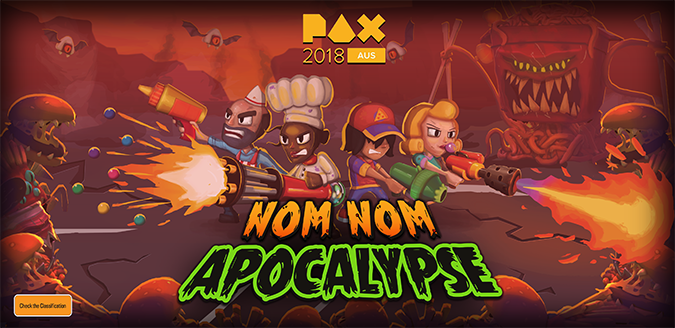
Last year Deadleaf Games was able to showcase Nom Nom Apocalypse at Pax AUS 2018. It was an awesome three days and thanks to everyone who stopped by to play the game, gave their support and feedback. We went through the majority of badges and cards by the second day. I also wanted to say thanks to Creative Victoria for the Pax Funding Grant and support, it was big help and we’re grateful for all the benefits we received.
So from Pax, after getting feedback/requests and watching the public play, we’ve made quite a few tweaks and updates. I loved hearing some of the ideas for monsters and guns, some of the feasible ones will make it into the game.
The most common request we had was for console/Switch and 4 player co-op. This is what I can say for now with what is planned:
- Nom Nom Apocalypse will hopefully release this year(2019) on PC and Mac
- It will be available on Steam and other marketplace stores
- It will have 2 player co-op
- Planning for a console release in the future, after launch
- If we can make it work well, we’ll add 4 player co-op
I would also like to mention, Jacob Leaney has been working on the music for Nom Nom. You can hear some of that awesomeness in the reveal trailer. The music really brings forth and adds another layer to the atmosphere and energy of the game. The boss battle sequence really paints a delicious end of days. I look forward to everyone hearing it while a giant monster noodle-box chops them apart.
Check out our links below and keep in the loop if you want to see gameplay/art snippets or just show some support!
- www.nomnomapocalypse.com
- Facebook @NomNomApocalypse
- Facebook @DeadleafGames
- Instagram @DeadleafGames
- Twitter @DeadleafGames
- Twitter @NomApocalypse
-Josh
Updated on September 6, 2018
New Game! Nom Nom Apocalypse
Hi all. I’ve been very quiet over the last year and for a good reason. I’ve been working away on a secret project which I can finally announce will be coming out this year!
Nom Nom Apocalypse is set to release late 2018 on PC and Mac
Nom Nom Apocalypse is a fast food, top down shooter roguelite where a band of trigger-happy cooks set out to reclaim their city.
Shoot! dodge OUTLAST the plague of greasy beasts and candy creatures that lurk around every unknown corner.
Use powers, equip perks and unleash your guns to turn the tide and save humanity. You can check out more here: www.nomnomapocalypse.com
If you sign up to the mailing list you’ll get saucy updates and receive a special bonus character for the game.
What about Defend Yer Booty! you say? It has been a part-time project of mine over the last few years and is fairly dense in terms of development, which is why I have put it aside to finish Nom Nom Apocalypse.
But never fear me hearties, I expect to return to Defend Yer Booty! in 2019.
Deadleaf Games is geared up to take full flight this year, so you can expect a lot more noise in the coming months ahead.
-Josh
Updated on December 17, 2017
Creating Swashbuckling Enemies

Ahoy! Today I’ll be talking about what I’m doing with the enemies of Defend Yer Booty! and trying to build an enemy vs. tower system that reduces restriction and encourages new strategies with player choice.

Towers VS. The Horde

One of my main goals of Defend Yer Booty! is to create a Tower-Defense experience with a variety of enemies. Along with this, allow the player not to be bogged down by having to choose towers/tools that can only destroy specific enemies, e.g. Air based enemies can only be taken down by anti-air based towers. So the towers/contraptions do their job, but depending on the enemy and placement would not work as efficient as others. This allows the player to strategize and to never be truly penalized by their choice.
Enemy Roles and The Counter Attack

To encourage the use of different techniques against enemies I’ve created different enemy roles. Like a traditional Tower Defense, enemies have an end goal to get to, but because enemies can effect towers and the player and vice-versa, this means that the gameplay needed to support counterattack situations. There’s three basic types of enemy roles the player will constantly encounter. The Target Seeker, whose goal is to go straight for the main target, will attack the player, towers or contraptions if they need to but will always generally not derail from their goal. Then there’s the Defense Breaker, who will try to take out as much as the player’s defense on the way. The last basic type is the Stalker, who will hunt down the player. These roles allow for small varying occurrences where the player is adapting and adjusting their defense to counter and survive.
Other Ways To Take Down The Horde

I’ve also added the ability for additional damage bonuses through using certain towers and contraptions. Enemies have a chance to be set on fire, poisoned or stunned, which makes for a satisfying opportunity. Enemies will also have slight strengths and weaknesses which adds another layer of awesome and hopefully encourages the player to be creative with their arsenal.
Versatility and Opportunity
Creating non specific counter strategies will hopefully allow players to make choices that aren’t binding and fatally consequential and more importantly interchangeable. Giving players more freedom with building their defense against the enemy also allows me to create a less rigid and predictable experience with spawning enemies and enemy types. On the other side of that, I feel like I’ve also created enemies with more depth as a result. I can’t wait to see how players build their defense. 🙂
-Josh
